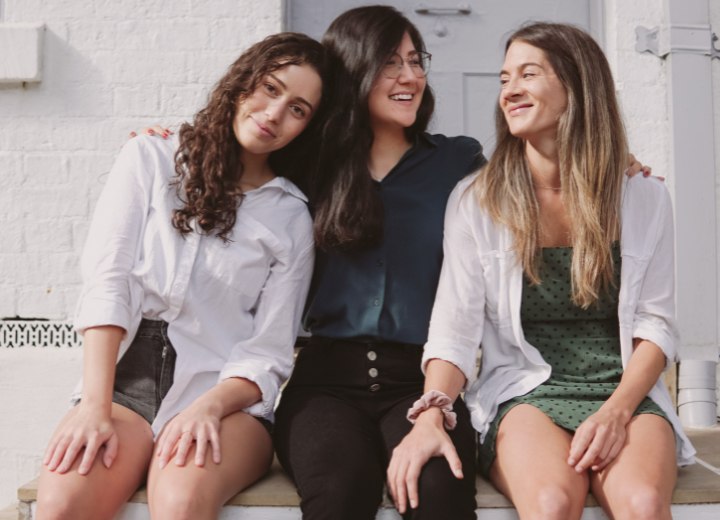Hair, Teenagers and Peer Pressure (2)

Lindsay Lohan's acting career was literally exploding, leading to an entourage of eager teenage girls, feeling pressured to have hair like the popular and beautiful actress. Lohan's hair consisted of long, layered locks of fiery red, which caused teenagers to be pressured to dye their hair a color they wouldn't have dreamed of months earlier.
Consequently, there were classrooms across America full of young girls with manes of blazing red. If the teenager, attempting to become another "Lohan," happened to have a long and oval face shape similar to Miss Lohan's, their quest to look like the "idol of the minute" was infinitely easier, as long, layered locks suit long face shapes.
The celebrity's obvious preference for blonde hair resulted in teenage girls feeling pressured to also have blonde hair, an accomplishment that requires a lot of maintenance and money. It is little surprise, therefore, that salons are thriving, seem "recession-proof," and can afford to keep raising their prices!
Brenda Song has also touched the hearts of many teenage girls with her role on the Disney Channel in America. Being a beautiful brunette, Miss Song has ensured that brunettes have stayed in fashion and has caused a whirlwind of teenage followers to eagerly hand over a photograph of the icon to a more than willing hairdresser.

One reason teenagers with hair that is "different" from their peers are often exposed to ridicule and taunts is because their hair does not conform to the "rules" that teenagers set for themselves. Youngsters with red, curly, or exceptionally thick hair often find themselves in a more difficult position to make their hair look the same as their friends'. Sadly, it is those teenagers who do have "different" hair who feel under the greatest amount of pressure to have hair that is physically pleasing and follows the fashion of the time.
Officially, young people are considered "teenagers" for seven years, and during this period, fashion can change dramatically as a teenager's personality and outlook on life evolve. As a teenager grows closer to 20, it is likely that the peer pressure they felt when they were 13 and 14 is not as intense, as they start to become more confident in being an individual.
As teenagers become adults, they no longer crave the desire to look like their friends, a look which is often generated from Hollywood. But then new generations of youngsters who are transitioning from children into teenagers begin to experience the severity of peer pressure, which is particularly prevalent in the way they wear their hair. The fickle world of fashion and celebrities recognize this enduring cycle of teenage peer pressure and deliberately thrive on preying upon the hearts of impressionable and emotionally immature people.
©Hairfinder.com
See also:
Teens with different hair
Teenagers and hairstyles
Teenagers and hair problems